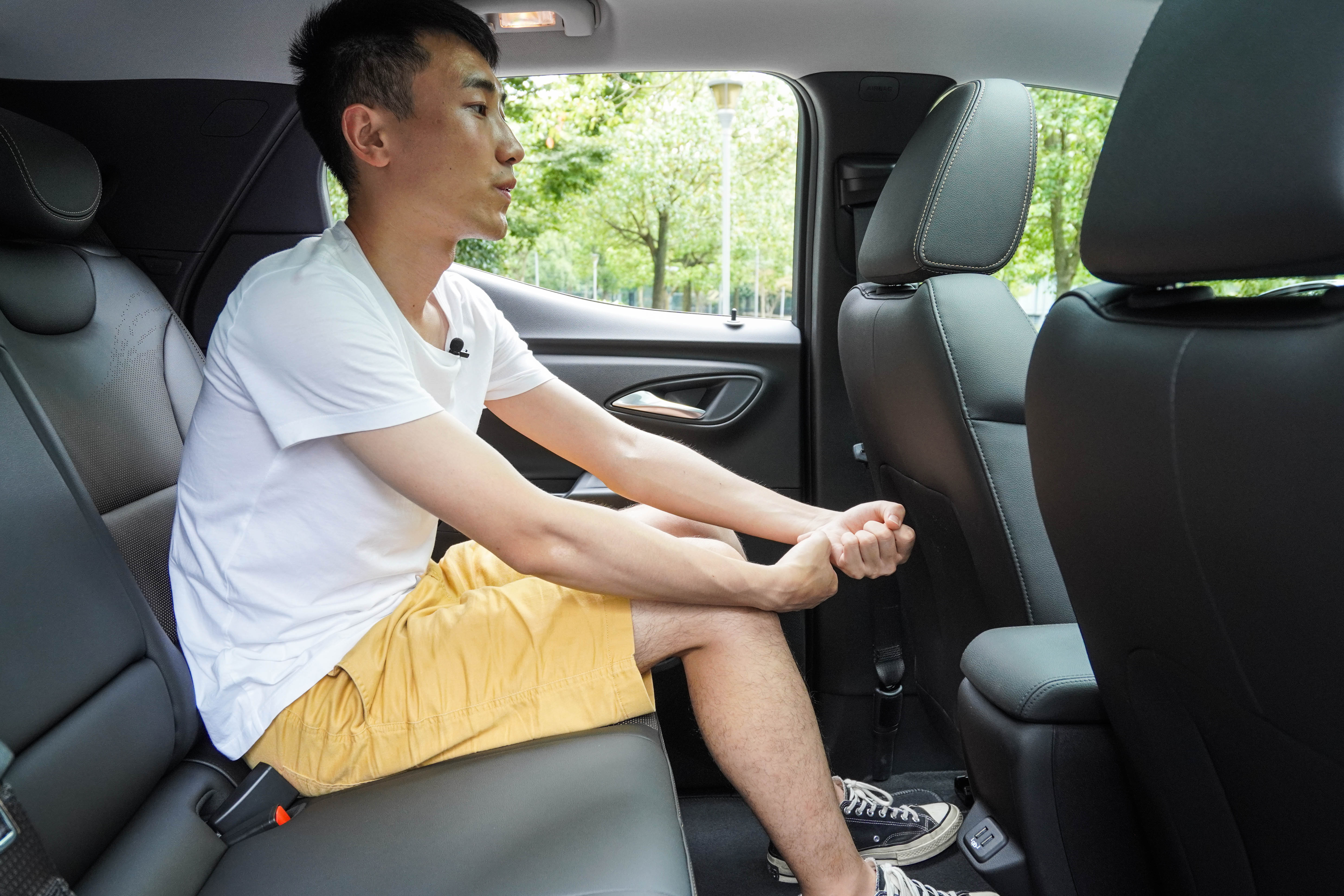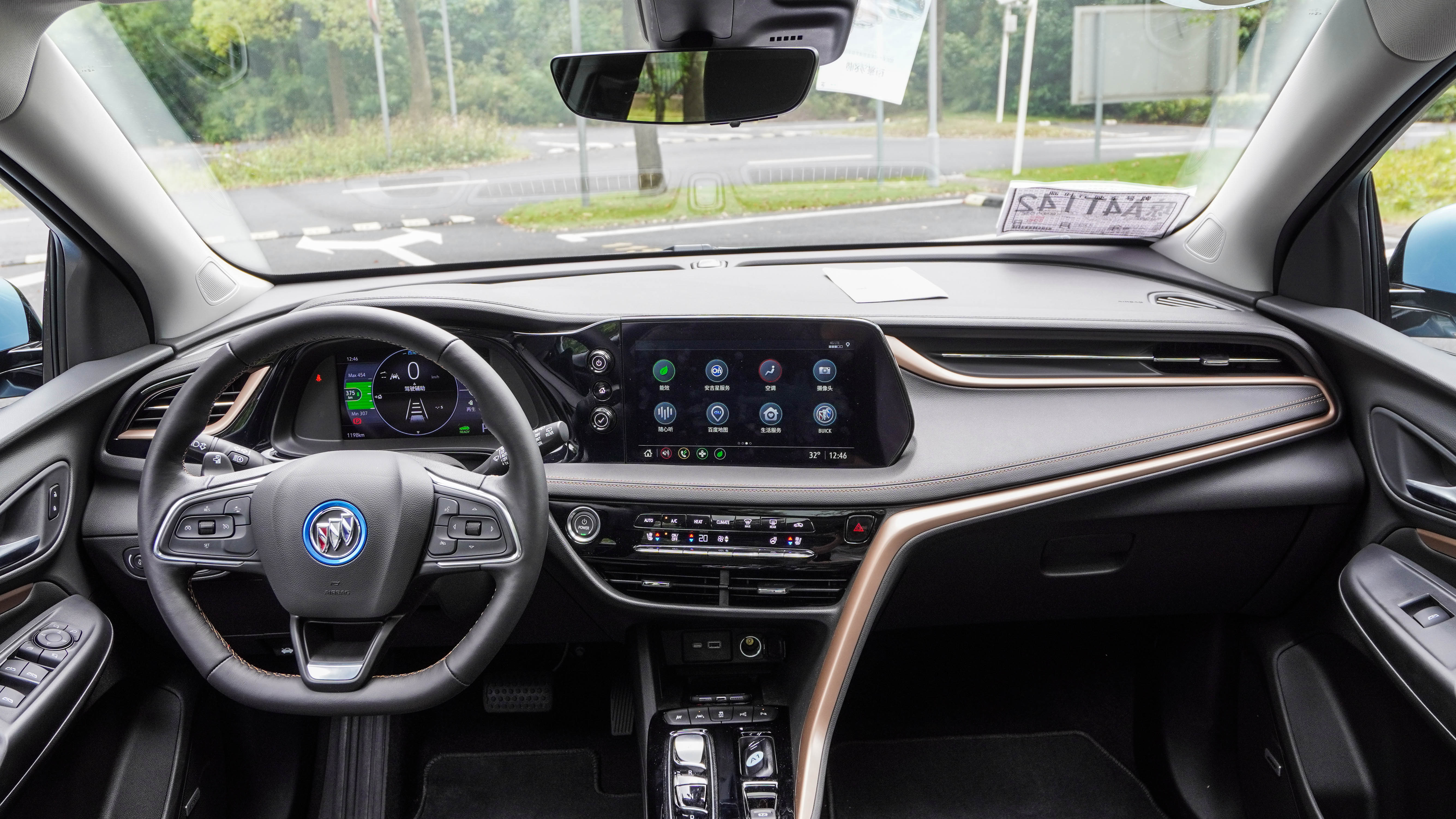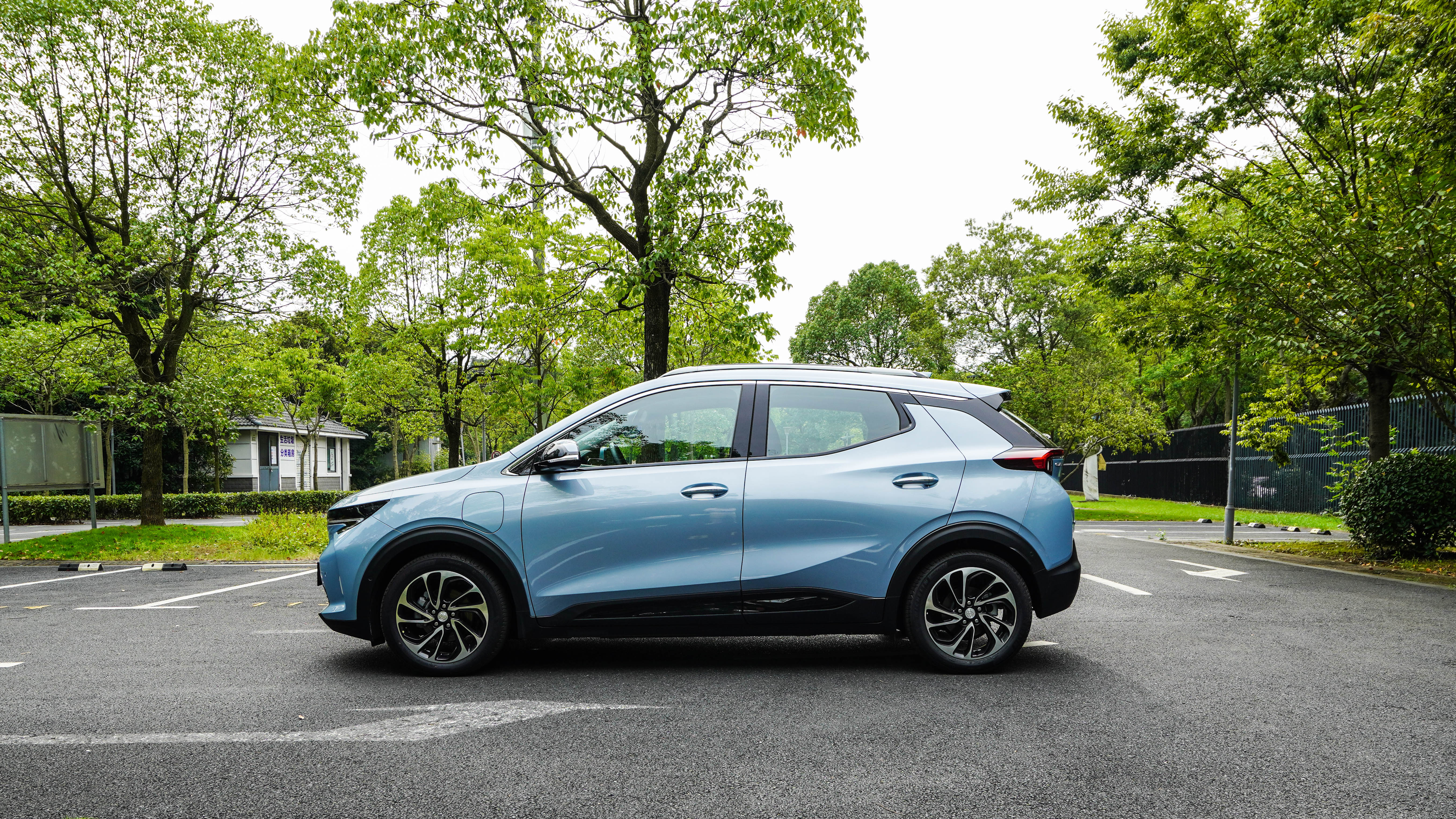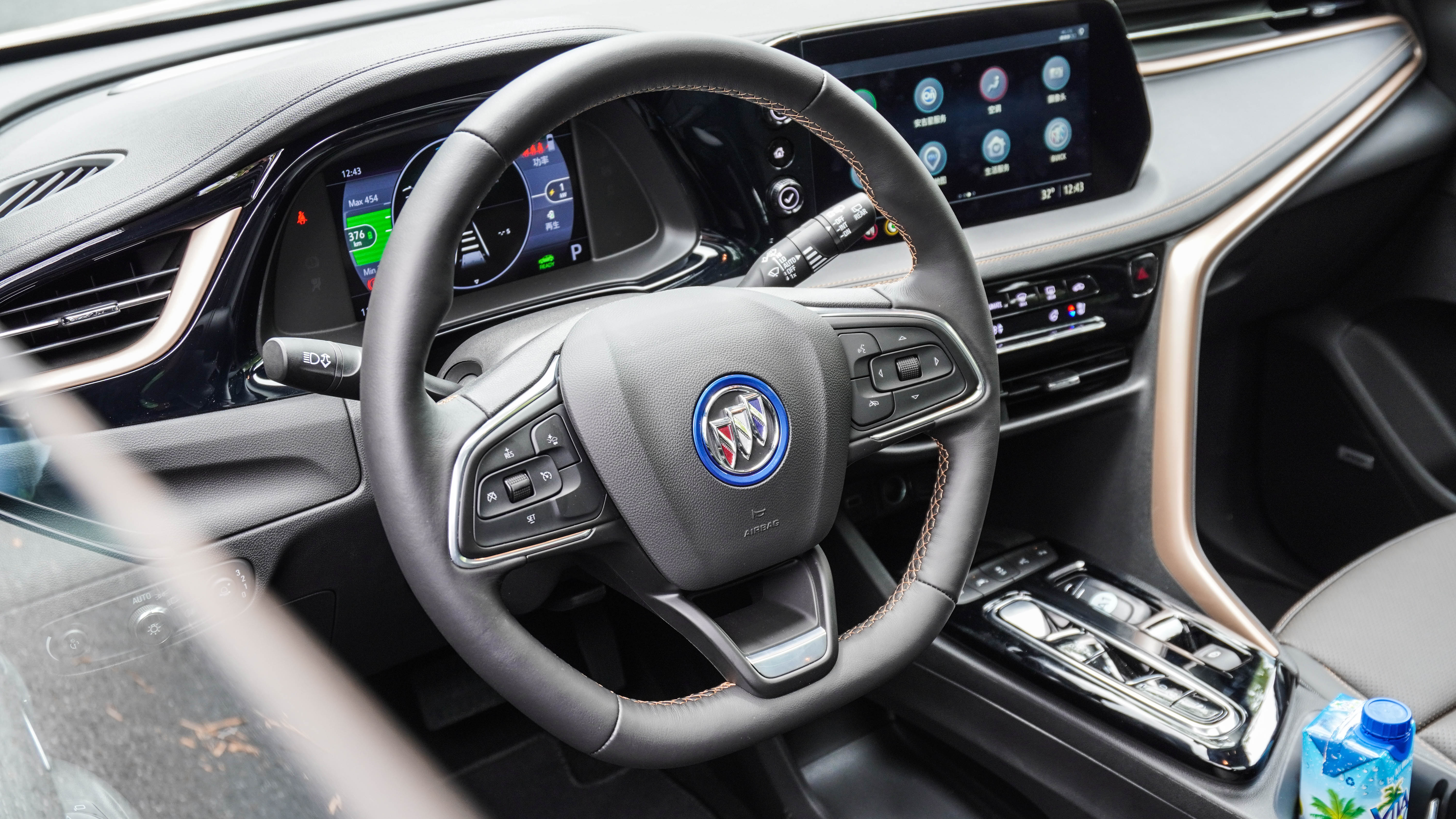A New Energy Vehicle Brand: Buick Micro Blue 7
A new policy of limited traffic in Shanghai has made the local new energy vehicle market once again hot. It is said that many brands and many stores have experienced a phenomenon of panic buying, and pure electric vehicles are becoming the main mode of transportation for commuting in cities, comparable to gasoline vehicles.
Among them, many friends are very concerned about pure electric SUVs under 200,000 yuan. Previously, I had test-driven many products of this level, including the Geely Geometry C and AION V, which are relatively well-known models. Today, I will focus on a joint venture brand – Buick Micro Blue 7.
Micro Blue 7 is a pure electric SUV recently launched by Buick in China. The Micro Blue series, as Buick’s new energy product line, is also well-known in China. I was impressed by the Micro Blue 6 model, so I had certain expectations when I came to test drive the Micro Blue 7.
Good and bad depends on technology
“Pure electric platform” is not a new concept anymore. From the perspective of technological development, there are two ways to build pure electric models: one is to develop a compatible platform that caters to both fuel and pure electric products, such as BMW, which is a representative of a compatible platform. Interestingly, on November 5th, Oliver Zipse, Chairman of BMW’s Management Board, stated that BMW is establishing a new department to develop a pure electric platform.
This shows the necessity of a pure electric platform.
General Motors’ current new energy platform is BEV2, and it will introduce the BEV3 platform for mass production in 2022. Micro Blue 7 is based on the BEV 2 platform, which is a positively developed pure electric platform.
On a pure electric platform, manufacturers will optimize the structure of pure electric vehicles to achieve better overall performance goals.
A pure electric platform can design the body according to the characteristics of pure electric vehicles, which can better control the distribution of the vehicle’s weight and achieve a balanced distribution of weight between the front and rear, which ultimately improves the handling performance indicators of the vehicle.
In terms of noise, vibration, and harshness (NVH), collision safety design, and cabin space layout, corresponding optimizations can also be made according to the characteristics of pure electric vehicles to improve performance indicators.
Scalability and battery safety are some of the features of the Buick Micro Blue 7 new energy platform, which can be widely compatible with various vehicle models, from the earliest Bolt EV micro electric vehicles to mid-size cars and even full-size electric SUVs.
In the platform architecture of Micro Blue 7, the power battery module is flatly distributed under the chassis, which allows the battery pack to be adapted to support different sizes of vehicles within the same architecture.In terms of important battery thermal management for electric vehicles, the Weilan 7 uses the unique General Motors cell level intelligent temperature management system. According to the official introduction, there are heat dissipation sheets between each cell in the battery pack, which enables single cell level temperature control management.
At the bottom of the battery module, there is a special water cooling system with a circular pipeline, which also brings benefits to the overall battery thermal management.
Technology is the foundation of product development, especially in terms of safety, which is often crucial despite being less perceptible.
However, for consumers, the actual experience of the product may be a more direct consideration factor, so let’s talk about the actual driving experience of the Weilan 7 below.
A great-looking car with a large interior space
Based on a pure electric platform, the Weilan 7 has many characteristics of a pure electric platform model, such as more comfortable seating space, a flat rear floor, and higher space utilization rate. But before we talk about these features, let’s talk about the first impression.
Beautiful but not flamboyant
“Coordinated” is the impression I had after seeing the Weilan 7 in person. The design of the Weilan 7 is not aggressive. If I didn’t know it was an electric car, I wouldn’t even associate it with one. But I didn’t feel that there was anything inappropriate. This design looks very comfortable, and compared to deliberately creating differentiation, the Weilan 7 actually made it easier for me to accept in terms of its design.
However, when you move to the front of the car, you will find that its grille has been replaced by a through-type decorative strip, and the contrast between the high-gloss black and the LED light strip paired with the blue body color is sharp but not abrupt.
If you look closely, you will also find some unique details of the Buick logo on both sides of the grille, which makes the front of the car look more layered. Under the beautiful blue car paint, it looks very delicate, and even makes me think of blue wings surrounded by the upper light strip.
The Weilan 7 is 4264 mm long, 1764 mm wide, and 1618 mm high, but this little guy with a length of less than 4 meters and a wheelbase of 2675 mm is even longer than SUVs like the CR-V. Its compact size also has the space of a compact car.# About “How to Maximize Space and Beautify Attitude with Limited Body Size”, I consulted the designer of this car, and his answer was that the design of Weilan 7 had already considered balancing aesthetics and space. Compared with ordinary models, the motor space of pure electric models takes up less space. Therefore, the designer moved the A-pillar of Weilan 7 forward to shorten the length of the front and rear overhangs. Without changing the height of the body, the visual aspect ratio was increased, achieving a lower body feel, ultra-low wind resistance, and larger space.

The side of Weilan 7 is another point I admire.
The chrome-plated trim above the windows makes the lines of the roof more layered, while the high-gloss black trim under the windows makes the lower body look more integrated, becoming a classic application of “black and white clear.” The rounded waistline and more angular lines under the door panel bring the trend of the front of the car to the slightly upturned tail. The scale is reasonable in creating a muscular feel, and with the beautiful wheels, it even has a hint of sportiness.
Interior: Practical and Elegant
As a joint venture brand, one of the undeniable advantages of Weilan 7 is its sense of quality, particularly evident in its interior.

Weilan 7 will not give you a sense of surprise at first glance, as the color black, a fail-safe color, gives the car a practical tone. However, several places of copper decorative ornaments make the car less “middle-aged,” while the black and gold match gives it a hint of fashion.
Most of the parts that come in contact with the body of Weilan 7 are wrapped in leather and soft materials. Although it does not feel particularly luxurious, it is delicate, and the interior assembly of Weilan 7 is still “compact,” which can be felt as a high-quality product from a major manufacturer.
Speaking of the interior, I would also like to mention Weilan 7’s rear seats. The cushions are higher than I imagined, and the seats are softer than I thought. I was originally afraid that sitting in the back would be uncomfortable, but it turned out to be quite comfortable. For a car of this size, it can be considered a space magician, and the rear seats also have a flat floor, making the convenience of getting on and off surpassing most other models.
 However, there are a few aspects of the interior of the Weilan 7 that I don’t appreciate, such as the contrasting stitching on the steering wheel and seats that seems unnecessary in order to match the theme color. Also, I don’t understand why car manufacturers like to use black plastic on the armrest control area, which may look good in photos but is actually a fingerprint collector.
However, there are a few aspects of the interior of the Weilan 7 that I don’t appreciate, such as the contrasting stitching on the steering wheel and seats that seems unnecessary in order to match the theme color. Also, I don’t understand why car manufacturers like to use black plastic on the armrest control area, which may look good in photos but is actually a fingerprint collector.

Overall, the Weilan 7 aims to strike a balance between “materials, design, and practicality,” and it succeeds.
Outstanding Chassis Performance and Rich Energy Recovery Options
For me, the attributes of a car can be divided into “tool-type” and “toy-type”.
A “tool-type” car is mainly used for commuting and transportation. This type of car is relatively balanced in terms of space, range, and reliability, and can take on a more “productive” role.
In contrast, a “toy-type” car pursues more excitement, such as personalized design and pure driving pleasure.
As a pure electric SUV designed for urban family use, the Weilan 7 clearly leans more towards the former.
Battery and Motor Specs:
The Weilan 7 is equipped with a permanent-magnet synchronous motor with a maximum power of 130 kW and a maximum torque of 360 N·m. The power battery uses a new generation of high-performance three-element lithium batteries, with a total capacity of 55.6 kWh, which includes 288 battery cells. The official NEDC range is 500 km.

The data already shows that the Weilan 7 is positioned for practicality.
In actual driving experience, I set the driving mode to standard and turned on energy recovery. The air conditioning was set to 22 degrees with three levels of wind, and with my colleague switching off driving with me, we obtained an average power consumption of 14.9 kWh per 100 km. Readers who are concerned about the range can refer to this number.
Now let’s take a look at the driving experience.
The Weilan 7 has two driving modes, standard and sport, and the driving experience can be felt differently between the two modes.
In comparison, I have experienced many pure electric products before, and they usually have three driving modes: ECO, NORMAL, and SPORT. However, the differences among these modes are often not significant, and the standard mode tends to be the one daily used.
The Weilan 7 is different.
In standard mode, the Weilan 7’s power output is already quite direct, but acceleration is relatively gentle, giving the feeling that “there is power reserve but the vehicle makes the release of power smoother for comfort.”Under sports mode, the power response of WeiLan 7 is faster, and the acceleration pedal becomes more sensitive. The steering damping also increases accordingly, making the driving experience more responsive.

The brake pedal of WeiLan 7 has a “general” feeling. There is about 1 cm of play when pressed down in the initial stage, but overall, the hardness is moderate, and the braking feeling and braking force are relatively linear.
Like most pure electric vehicles, WeiLan 7 is equipped with a regenerative braking system. However, WeiLan 7 has more options, including standard mode, OPD single-pedal mode, ROD single-key enhanced regenerative braking, and OPD single-pedal mode + ROD single-key enhanced regenerative braking four mode combinations.

The standard mode and single-pedal mode are easy to understand and similar to Tesla’s regenerative braking logic. ROD is a new function. WeiLan 7 adds manual paddles on the left side of the steering wheel. By controlling the paddles, the regenerative braking can be enhanced. In simple terms, it is a manual regenerative braking switch.
There are two points worth mentioning about the ROD experience:
First, in congested traffic conditions, you don’t need to press the brake pedal. You can use the paddles to brake, and the regenerative braking force of ROD is higher than that of the single-pedal mode, making it easy to distinguish between them.
The second is that ROD can be used in combination with other modes, and ROD + standard mode is equivalent to the driver manually controlling the regenerative braking, so that the regenerative braking can be “intervened” as desired instead of constantly intervening.
ROD + OPD can achieve the strongest regenerative braking efficiency, but the force is quite strong and requires adaptation.
WeiLan 7 deserves praise for not tying the regenerative braking force to the driving mode. In other words, under sports mode, regenerative braking can also be used in combination according to personal preferences. This logic is quite user-oriented.
Therefore, the rich options of the regenerative braking system are one of the highlights of WeiLan 7.

Then there is the steering. I personally don’t like the steering performance of WeiLan 7 very much. The steering angle and my intuition are a bit different. For example, when driving on a highway, the steering wheel has turned a relatively large angle, but the turning angle of the front wheels is still relatively small. In short, it is not very precise, but fortunately, the steering damping sensation is still advanced, maintaining some of the feel of steering.
In terms of chassis, whether it is a traditional oil-powered car or a pure electric vehicle, Buick has always been on this area. The previous test-drive models had a good chassis feel, with a kind of American sporty feel, and WeiLan 7 is also of this style.
In terms of suspension configuration, the Weilan 7 uses a front MacPherson and rear torsion beam suspension, with a relatively average setup.

However, Buick’s tuning is really impressive. The Weilan 7 has sufficient suspension rebound on continuous bumpy roads with large undulations, and the body’s attitude control is also reasonable. Passing over manhole covers and deceleration only produces relatively little aftershocks. Overall, its ride comfort matches its price tag.
Final thoughts
As mentioned in the article, the Weilan 7 is positioned as a practical commuting vehicle. Its overall performance is relatively balanced with good levels in terms of range, space, appearance, interior, and comfort.
Apart from the aspects I dislike, it seems there are no points that really bother me about the Weilan 7.
Compared to domestic brands’ competing products, its cost-effectiveness may not be as outstanding. However, after all, as a joint venture car, material and mechanical quality have always been a case of getting what you pay for.

Moreover, for me, the Weilan 7’s exquisite and beautiful design is much better than some models that are excessively designed just to be special.
Finally, living in a license-plate-restricted city like Shanghai is really inconvenient without a car. If your budget is below 200,000 yuan, and you really want a pure electric SUV primarily for commuting, with the need for occasional back-seat passengers, the Weilan 7 is a worthy option to consider. You can understand my experience by trying it out yourself.
This article is a translation by ChatGPT of a Chinese report from 42HOW. If you have any questions about it, please email bd@42how.com.
